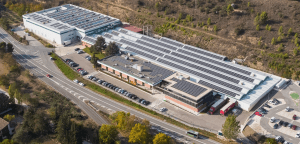The latest computer and telecommunication system developments are expanding the scope of traditional data center operation. In the past, its management was focused in the electrical and cooling infrastructure. The demand of power was quite predictable and the facility manager had enough time to adapt the infrastructure to the demand. These IT systems worked stable in a single location and facility manager’s only needed to know the installed IT systems electrical power and its future expansions.
Deployment of the cloud-computing model requires a new point of view with respect to infrastructure capacity management. The cloud IT systems work in different locations and configurations throughout the day changing every hour in many cases, according to user demand. The result is that the power demand curve and associated cooling requirements have huge variations along the day with a hard-to-predict demand behavior profile.
Due to this new problem, it’s necessary to align the IT system demands with the facility resources in an automatic and direct way. Thanks to the current Data Center Infrastructure Management solutions (DCIM), this is now possible. IT departments and facility managers need to communicate fluently and keep connected at all times.
To support this new challenge DCIM must be layered on top of the facility SCADA system and integrate all data center operational aspects, from electrical power, cooling, redundancy, security and IT capacity, to its expected demands at all times. A powerful forecasting model must be integrated in order to help facility managers with this demanding task. In addition, DCIM would have to possibility to act as an emergency response tool, to assist facility managers to balance the IT capacity between data centers in case of an outage or crisis.
This new DCIM model must be the tool for the facility manager to give a little step toward the IT world and a big step to the virtual data center and its future expansions.



